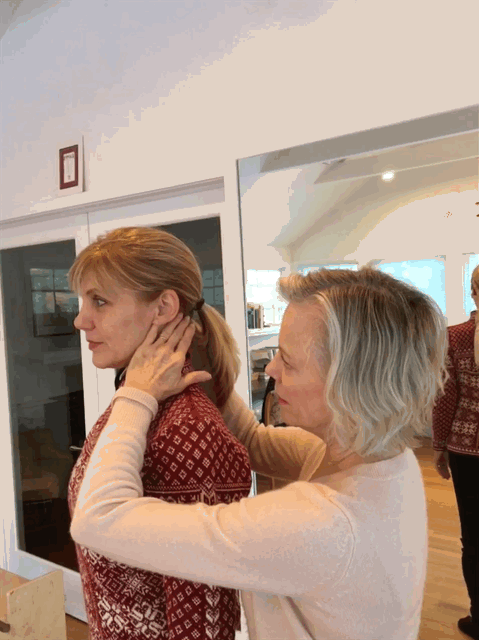 When I was a young ballet dancer, people commented on how straight my posture was – no misappropriated curves in my spine (actually few curves altogether!), basically straight. I would hear “you have such good posture”. I thought I did and so did they.
When I was a young ballet dancer, people commented on how straight my posture was – no misappropriated curves in my spine (actually few curves altogether!), basically straight. I would hear “you have such good posture”. I thought I did and so did they.
The truth is that none of the above mentioned qualities were examples of good posture – especially outside of the studio and stage. Dancers, musicians, singers, and athletes can all develop habits while pursuing their passion and unknowingly pile on interferences. They may be in the form of stress both mental and physical and recruiting the wrong muscles for the job prohibiting the needed muscular effort elsewhere.
If interference persists, pain, ache, tightness and injury may be the result. I was surely there 15 years ago.
We still talk about good posture as an important contributor to health and wellbeing. What is less talked about, though, are the potential pitfalls of our belief around good posture.
Do these statements ring true?
- Having good posture means a straight neck and spine.
- Having good posture means that you are “doing” something.
- Having good posture means that you are pulling up.
- Having good posture means that you are very relaxed.
If we take statements 1, 2 and 3 as inaccurate, would the contrasting #4 be accurate?
The answer is a definite NO. Very relaxed is probably collapsed or another form of compression.
So, how in the heck can we improve our posture if our potential ‘fixes’ are all counterproductive?
Exactly!
Most postural recommendations arise out of a sense of ‘doing’ something. The problem is that when we try to correct our posture by physically doing it, we are accessing what we already know quite well – OUR HABITS. Oh dear, we are often back to square one.
Posture, or how we move ourselves in our lives can be tricky. Here are some common approaches. See if you can spot yourself.
- Stiffening or bracing. (Vertebrae are held in place with little flexibility. Movement restricted)
- Pulling down. (Vertebrae are compressing. Movement restricted).
- Knowingly or unknowingly holding your breath to “keep everything together”. Movement restricted because your diaphragm and ribs are not moving.
- Keeping your neck ‘straight’ and tall. See # 1.
Here is what I know from years of training and teaching:
- Good posture comes from a belief that our thinking can be a powerful conscious tool that can modulate the tone in our body. (BTW, we are doing that anyway- but it is unconscious).
- We can modulate the tone in our body by understanding oppositions and by recognizing habits of tension that interfere with automatic uprightness. Look to toddlers and animals for this!
- Good posture includes an awareness of our pattern of breathing. Do we breath shallowly, breath in and out with unnecessary tension, or barely at all?
Every one of us dancers, social, competitive, amateur or professional can improve our level of performance by doing more thinking and doing less doing.
If this seems unfamiliar – you are right – but that is the point.
If you want to find out more, book a lesson with me, either on Zoom or if you are in the NY/NJ area at my studio in Montclair, NJ. Please use my contact form, tell me about yourself and leave your availability. I will respond within 24 hours.
Happy Dancing! If you know other dancers who may benefit from reading my blog, please forward. If you are a teacher or studio owner, I can do a workshop on location.










 Rabbit Hole: the definition from ‘the free dictionary.’
Rabbit Hole: the definition from ‘the free dictionary.’